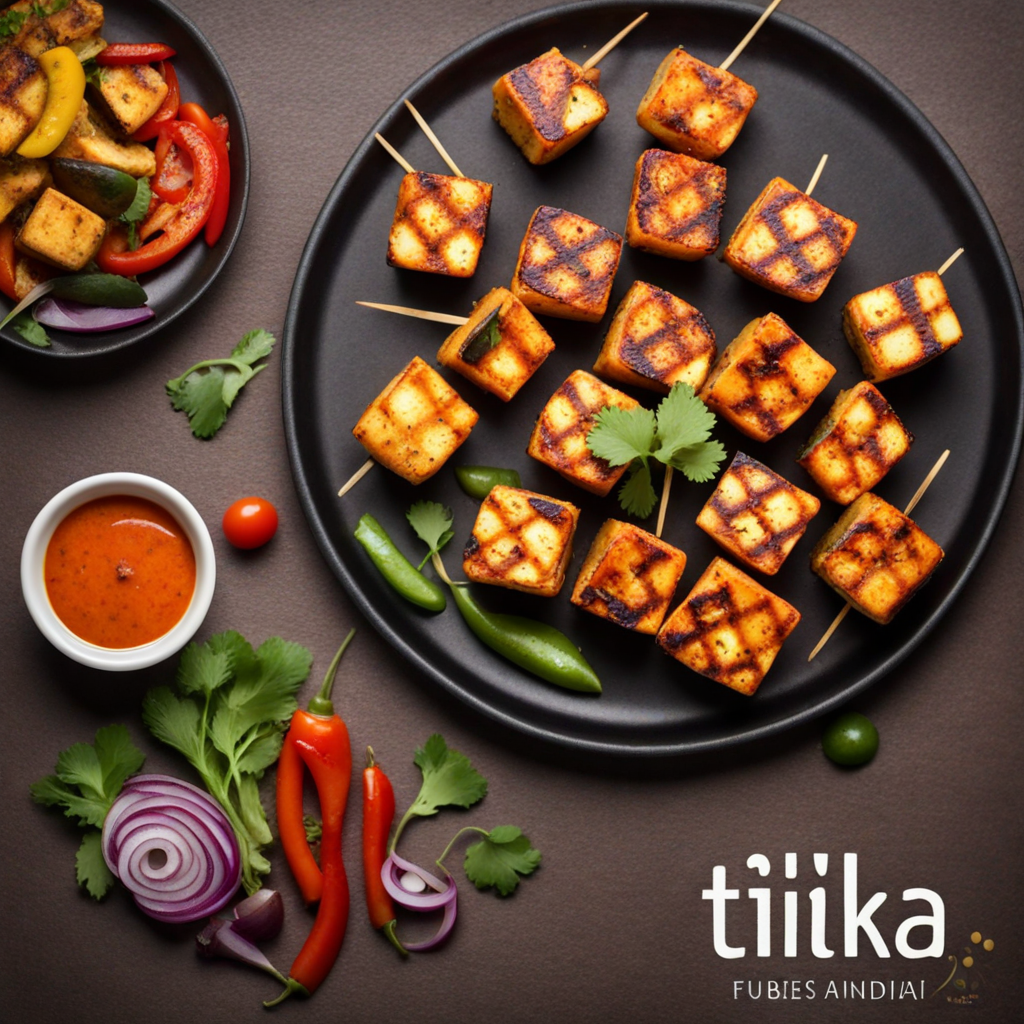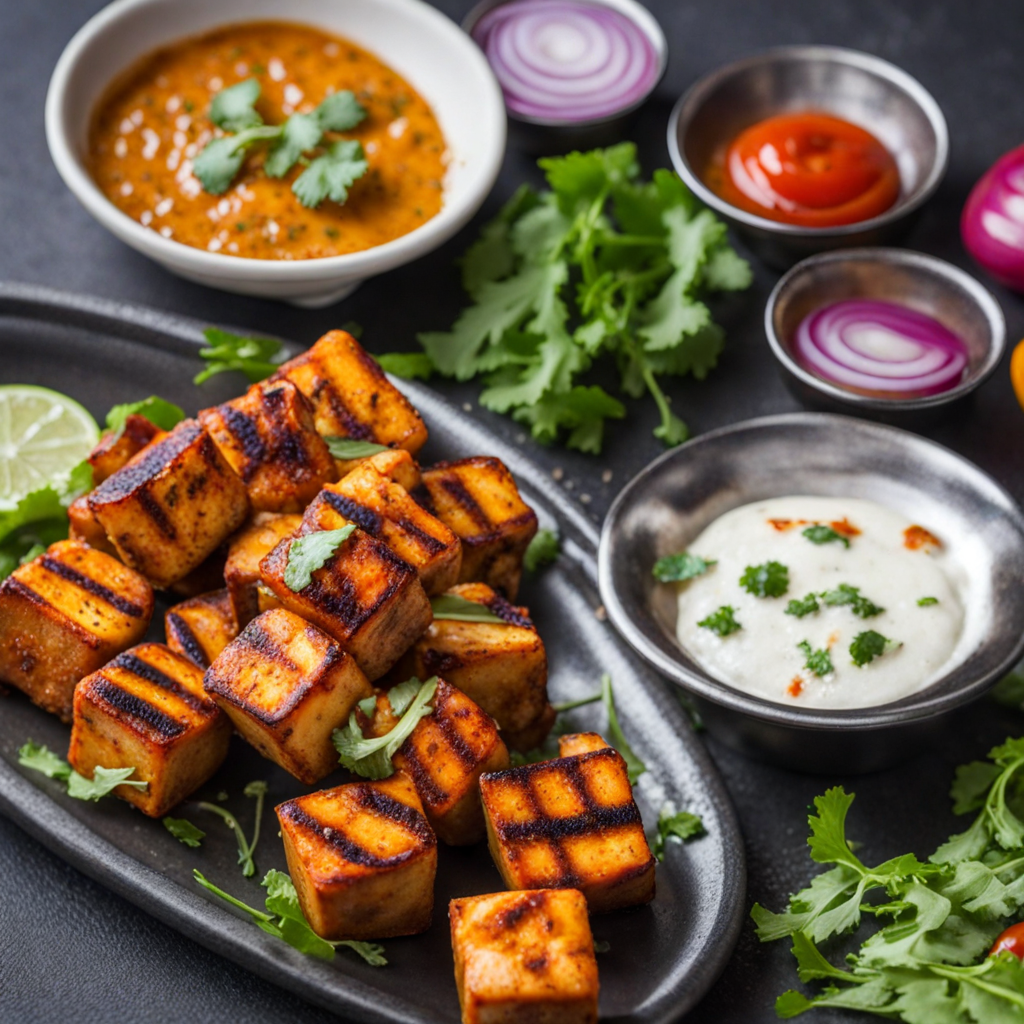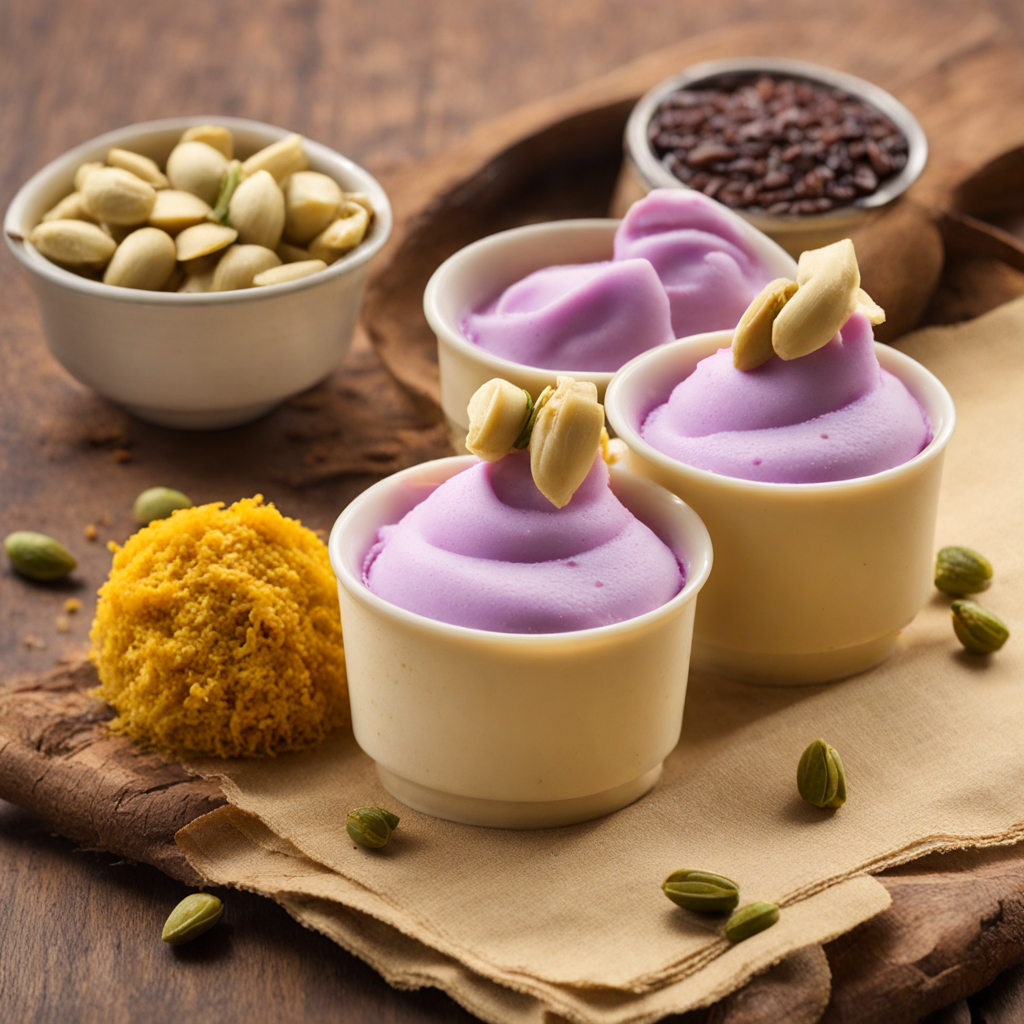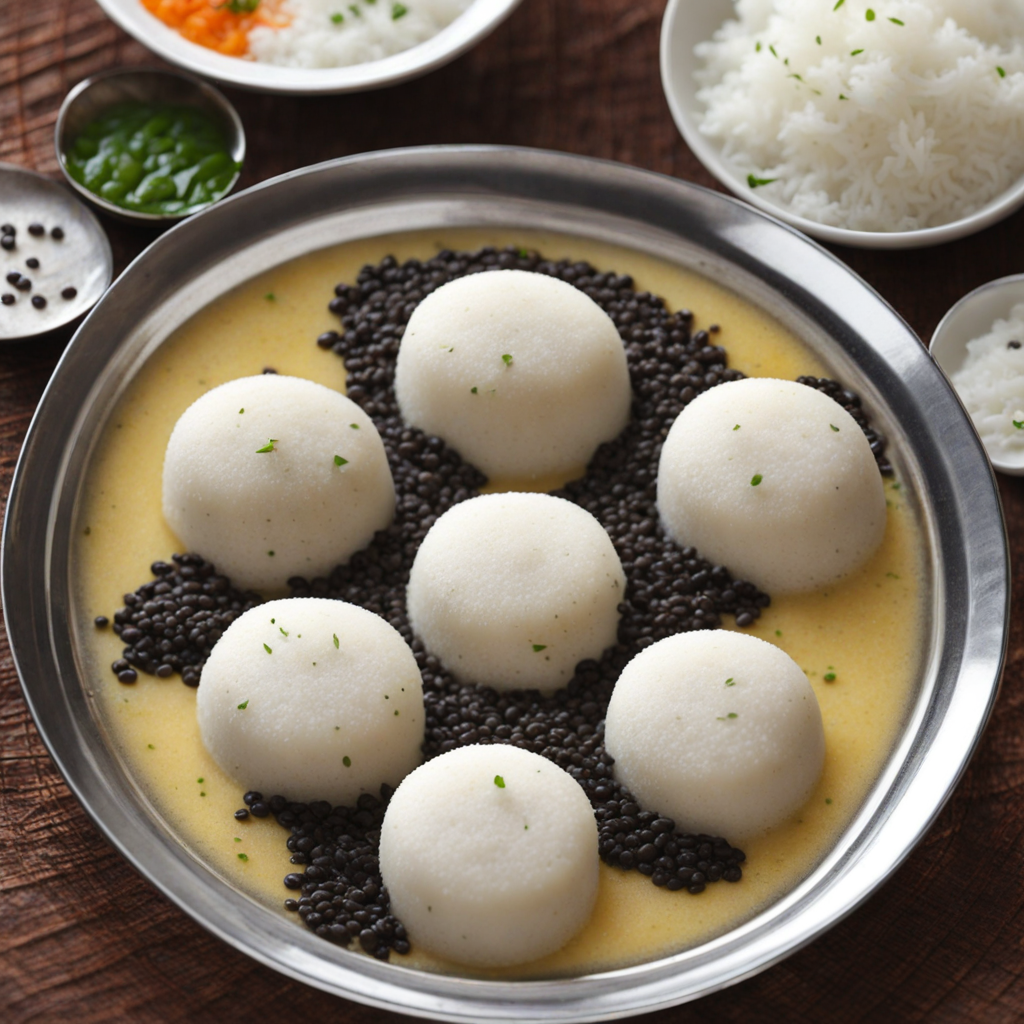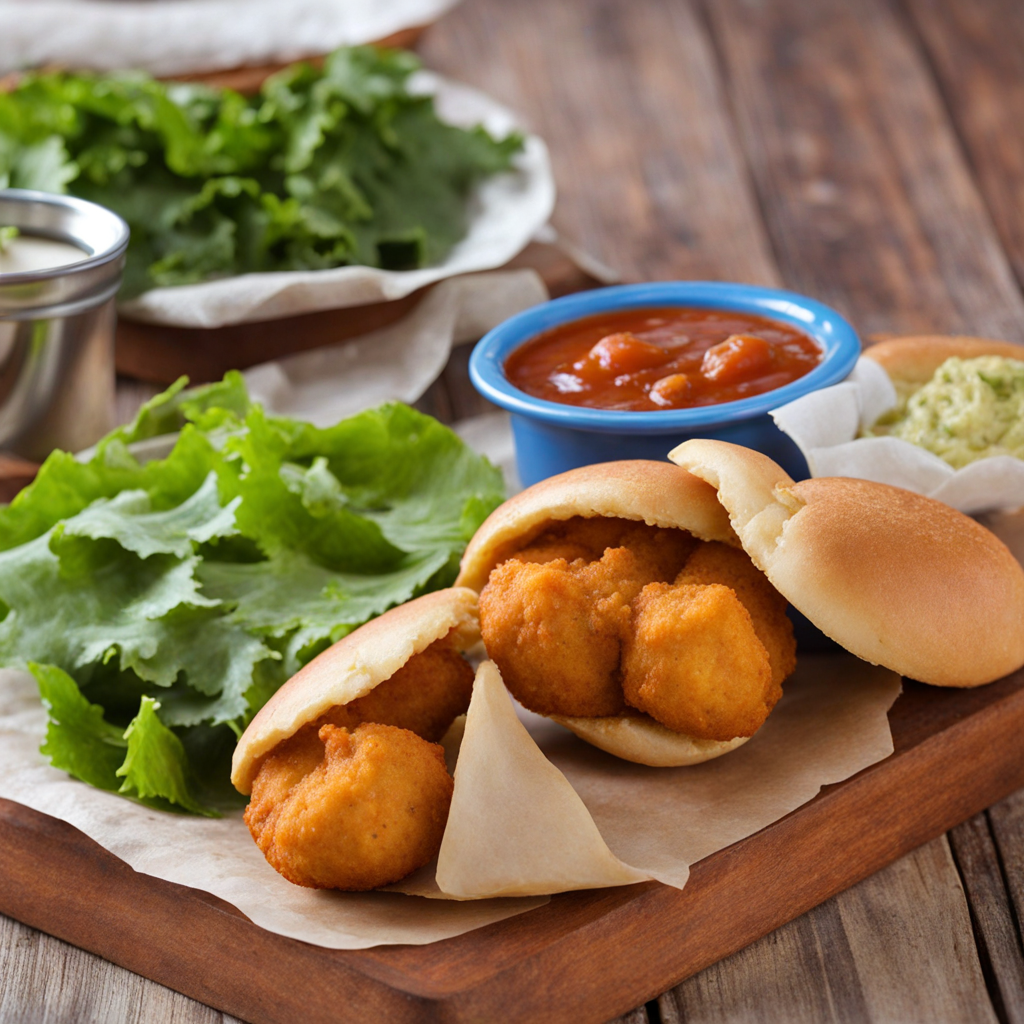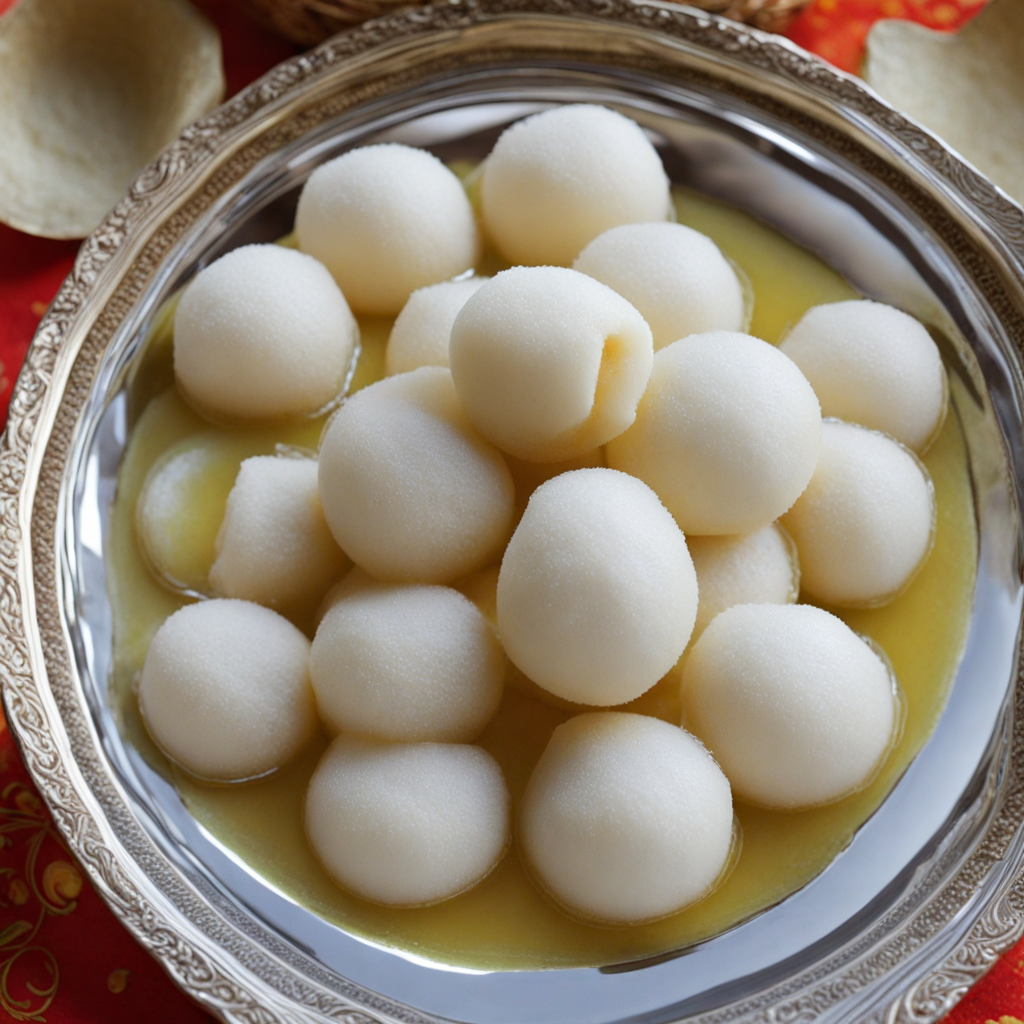Paneer Tikka
Paneer Tikka is a delightful Indian appetizer that showcases the rich flavors and textures of marinated paneer cheese, a staple in Indian cuisine. The dish is made by cubing fresh paneer, which is then marinated in a blend of yogurt and aromatic spices such as cumin, coriander, turmeric, and garam masala. This marinade not only imparts a tangy flavor but also tenderizes the paneer, allowing it to soak up the vibrant spices. After marination, the paneer cubes are skewered with colorful bell peppers and onions, enhancing the visual appeal and adding a hint of sweetness and crunch to each bite. Once assembled, the skewers are grilled or baked to perfection, creating a smoky char that intensifies the flavors. The cooking process caramelizes the edges of the paneer, giving it a slightly crispy texture while keeping the inside soft and creamy. The dish is often served with a side of mint chutney, which adds a refreshing contrast to the warm, spiced flavors of the tikka. Each bite is a harmonious blend of spices, creaminess, and a hint of smokiness, making it a popular choice among vegetarians and non-vegetarians alike. Paneer Tikka is not just a dish; it’s an experience that transports you to the streets of India. It can be enjoyed as a starter at a festive gathering, a party snack, or as part of a larger meal. The versatility of paneer tikka also allows for variations, including tandoori paneer tikka, where the dish is cooked in a traditional clay oven, imparting an even more distinct flavor. Whether you pair it with naan, rice, or simply enjoy it on its own, Paneer Tikka is sure to tantalize your taste buds and leave you craving more.
How It Became This Dish
Origins of Paneer Tikka Paneer Tikka, a popular vegetarian dish from India, has its roots in the ancient culinary traditions of the Indian subcontinent. The word "paneer" refers to a fresh cheese made from curdled milk, which has been a staple in Indian households for centuries. The technique of grilling or roasting foods can be traced back to the Mughal era, when various cooking methods were introduced from Central Asia. The Mughals brought with them the art of kebab-making, which laid the groundwork for dishes that involve marinated and skewered ingredients. The evolution of Paneer Tikka can be linked to the broader concept of Tikka, which refers to small pieces or chunks of meat or vegetables marinated in spices and yogurt, and then grilled or cooked over an open flame. The vegetarian variant, Paneer Tikka, likely emerged in response to the dietary preferences of many Indians, especially in the northern regions, where vegetarianism is prevalent due to cultural and religious beliefs. \n\n Cultural Significance Paneer Tikka holds a special place in Indian cuisine, not only for its taste but also for its cultural importance. The dish is often served at festive occasions, weddings, and family gatherings, symbolizing hospitality and the richness of Indian culinary heritage. It is common to find Paneer Tikka in restaurants and roadside eateries, showcasing its popularity across all socio-economic strata. The dish is also associated with the concept of "tandoori" cooking, which reflects the traditional cooking methods of India. Tandoor ovens, clay ovens used for cooking, have been a part of Indian culture for centuries. Paneer Tikka is typically prepared in a tandoor, which imparts a distinct smoky flavor and charred texture that enhances the dish's appeal. The combination of spices used, such as cumin, coriander, and garam masala, along with the use of yogurt for marination, elevates the dish to a culinary delight. \n\n Development Over Time As Indian cuisine evolved, so did the preparation of Paneer Tikka. In the early days, the dish was primarily associated with the northern states of India, particularly Punjab. The region is known for its rich agricultural produce and dairy farming, making paneer widely available. Over time, the recipe began to incorporate local ingredients and flavors, adapting to regional tastes and preferences. In the late 20th century, with the rise of globalization and the increasing popularity of Indian cuisine worldwide, Paneer Tikka gained international recognition. It became a staple in Indian restaurants abroad, often served as an appetizer or a main course. The dish's versatility allowed chefs to experiment, resulting in various adaptations and fusion recipes that incorporated elements from other cuisines. For example, in the United States and Europe, Paneer Tikka sometimes appears in wraps or as a filling in pizzas, showcasing its adaptability beyond traditional Indian contexts. These innovations have helped introduce Indian flavors to a broader audience, making Paneer Tikka a beloved dish among not just Indians but also food lovers around the globe. \n\n Health Aspects Paneer Tikka is not only celebrated for its flavor but also for its nutritional value. Paneer, being a rich source of protein, calcium, and essential vitamins, makes it a popular choice among vegetarians and health-conscious individuals. The use of yogurt in the marinade adds probiotics, which are beneficial for gut health. The spices used in the dish, such as turmeric, cumin, and coriander, are known for their anti-inflammatory properties, further enhancing its nutritional profile. As health trends evolve, so does the preparation of Paneer Tikka. Many modern variations focus on reducing oil content, using healthier marinades, or incorporating more vegetables into the dish. This adaptation reflects a growing awareness of health and wellness among consumers, ensuring that Paneer Tikka remains relevant in contemporary culinary discussions. \n\n Regional Variations While Paneer Tikka is most commonly associated with Punjabi cuisine, it has inspired numerous regional variations across India. In South India, for example, Paneer Tikka might be spiced with a different blend of local spices and served with coconut chutney. In Maharashtra, the dish may incorporate traditional spices like goda masala, reflecting the local palate. Furthermore, the introduction of vegetarianism in various cultures has resulted in diverse interpretations of the dish. In Western countries, Paneer Tikka may be served alongside a salad or as part of a larger mezze platter, highlighting its adaptability to various culinary traditions. \n\n Modern Trends In recent years, the food scene has seen a resurgence of interest in traditional Indian cuisine, with chefs and home cooks alike revisiting classic recipes. This revival has led to more innovative takes on Paneer Tikka, including the use of alternative cooking methods such as grilling, baking, or even air frying, catering to contemporary tastes and dietary choices. Food festivals and culinary shows have also contributed to the popularity of Paneer Tikka, showcasing it as a dish that transcends borders and unites people through shared culinary experiences. The dish's ability to accommodate various dietary restrictions, such as being gluten-free and vegetarian, makes it a suitable option for many, further solidifying its place in the modern culinary landscape. \n\n Conclusion From its humble beginnings to its status as a beloved dish, Paneer Tikka encapsulates the rich tapestry of Indian culinary traditions. Its evolution reflects not only the history of Indian cuisine but also the adaptability of food in response to changing cultural and dietary trends. As it continues to be enjoyed both in India and around the world, Paneer Tikka remains a symbol of hospitality, creativity, and the vibrant flavors that define Indian food culture.
You may like
Discover local flavors from India


